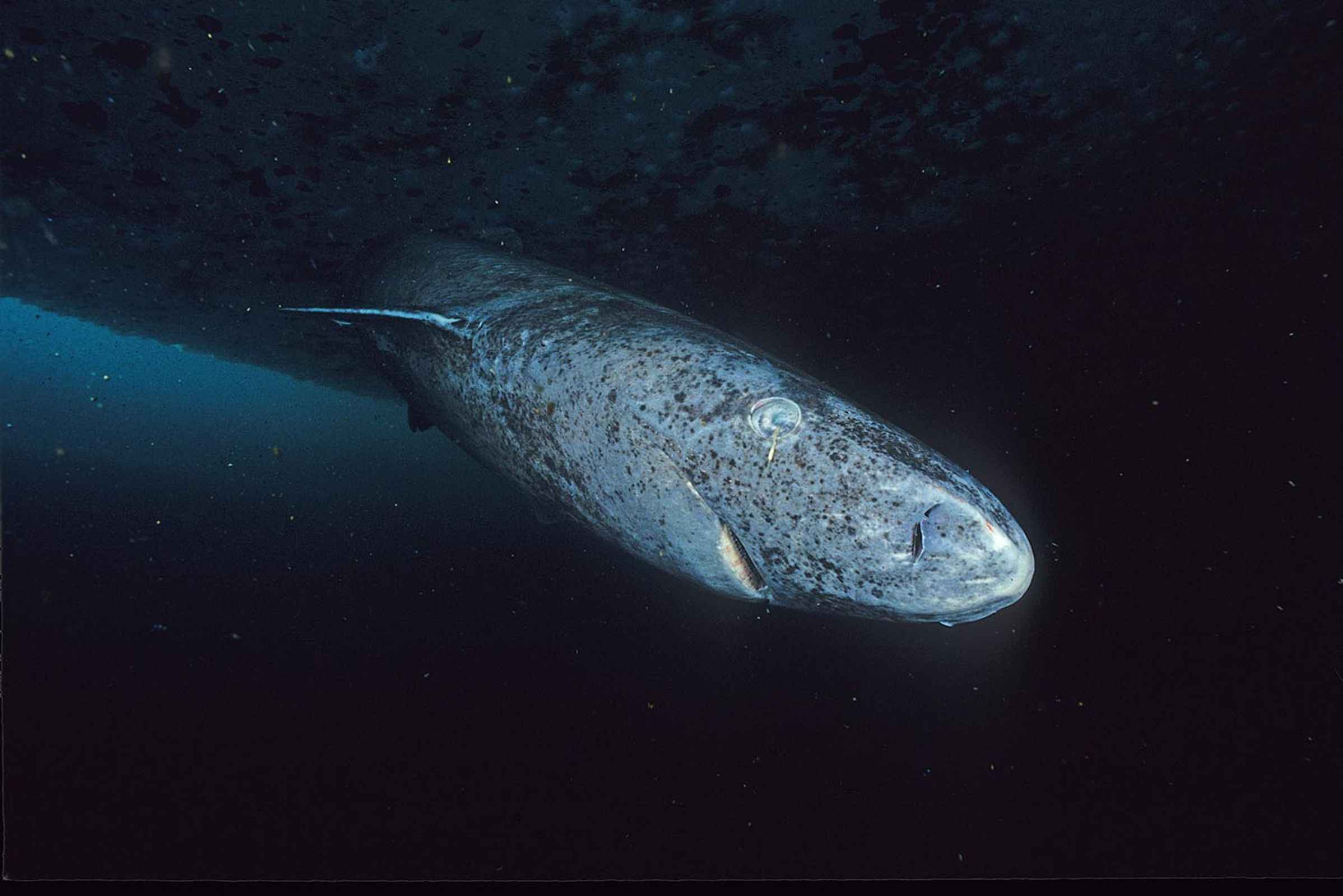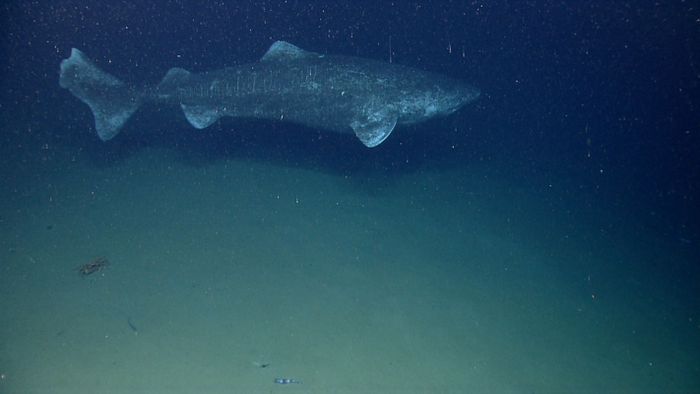Meeting the Greenland Sharks
Have you always been curious about one of the largest shark species? Meet the Greenland shark in this detailed article.

When we hear the word “big sharks”, we usually think of the great white shark because of its reputation for having the most unprovoked attacks against humans. They can body slam a Destroyer and those ships can tip over. We think about the Megalodon too but we’re not entirely sure either if that shark exists. But there is one large, prehistoric shark that still swims in the waters. We call it the Greenland shark.
What are Greenland Sharks?
Considered one of the largest shark species, the Greenland shark can grow up to a maximum of 24 ft, although they grow at an average of around 15 ft. They have a lifespan between 250 and 500 years old, proving how resilient they are as a species. Despite the hunting and constant weather changes, these sharks survived for so long, although they were recently flagged to have a near-threatened conservation status.

If ever you do encounter a Greenland shark, you can identify them by checking its back for markings. Its back either has faint white spots splattered on its back or fading dark streaks that run along the back. Other than that, some may even mistake the Greenland shark for the grey reef shark because of its similar body color. Unlike the Greenland shark though, the grey reef shark has marks on its fins while the Greenland shark has none.
Greenland sharks, unlike their cousins, do not rise to surface too much since they have no need to. Studies have shown that Greenland sharks have different forms of haemoglobin inside them which allow them to withstand the crushing underwater pressure and lack of oxygen.
Greenland Shark Diet and Feeding Habits
Like most of their shark cousins, they’re not entirely picky with their food. As an apex predator, they take what they can get. They may eat smaller sharks, seals, polar bears, and other kinds of fish. But their size makes it difficult for them to engage moving prey, so they normally attack their prey while they’re asleep. Using their faded colors, they hide in the murky, frigid waters before striking their prey.
Despite their colossal size, that still doesn’t stop them from favoring fast-moving prey as their breakfast, lunch, or dinner. The Greenland sharks appear to enjoy the thrill of the hunt, mangling their prey instead of just swallowing them whole. Their 48-52 teeth rotate and grind, mincing the meat as they mangle their prey. Kind of like how a crocodile eats, these sharks are not clean eaters.
However, some say that Greenland sharks favor eating whale carcasses since whales can withstand freezing temperatures.


Are Greenland Sharks Dangerous to Humans?
It doesn’t seem that humans are a part of the Greenland shark’s menu. There haven’t been any recent attacks with the last attack allegedly happened in 1859 when they found a human leg inside a Greenland shark’s stomach. Although, nobody could prove it was an authentic Greenland shark attack since the waters where it stays are so freezing cold, humans would rather steer clear from the area.
However, that doesn’t mean they’re still not capable of killing humans. They kill them by poisoning them. Similar to how people get a thrill from eating a puffer fish dish known as fugu, Greenland shark meat — if not treated right — releases a toxin known as trimethylamine oxide (TMAO) which kind of makes people feel drunk. Some cases of people getting poisoned because they ate Greenland shark meat were because of the high urea content in the meat.
That still doesn’t stop the people from Iceland from eating them though. They usually ferment it or bury it in ice to press out all the TMAO. Once the TMAO is all pressed out, they dry it for a few more months before selling it as kæstur hákarl, a delicacy. Iceland hunted these sharks to cull the numbers, even exporting their liver oil until the 1960’s when they learned how to make synthetic oil instead.
Legend About the Greenland Sharks
Greenland sharks play a big role in Inuit legends. One was the legend of the Skalugsuak. Legend has it that Skalugsuak was the very first Greenland Shark and also was one of the bigger ones.
They say that Skalugsuak came from a cloth soaked in urine. An old woman one day went to shore to wash her hair. She washed her hair in urine and as she wiped it dry, a gust of wind snatched the cloth from her hands. The cloth then flew into the pot that belonged to Sedna, ruler of the underworld and deep-sea creatures. Enchanted by Sedna’s magical urine, the cloth turned into Skalugsuak and rampaged against humans by throwing them off their kayaks and having them for a meal. Unfortunately, nobody knows the ending of the tale of the vicious Skalugsuak. Some say he still swims in the deeper portions of the arctic water, ready to deliver Sedna’s revenge should humanity slight her even a little.
Recently, scientists have been trying to gain more data regarding the Greenland shark. Some say that the oldest one they found was 392 years old and weighed around 3100 lbs. Although some claimed it was Skalugsuak, others said that Skalugsuak would have to be older than 392 years. They discovered its age by checking the cartilage of the shark. Unlike the other sharks, the Greenland sharks don’t have bones but instead, have soft tissue. These soft tissues have rings — similar to a tree — which scientists used to identify the age of the Greenland shark.
Catching the Greenland Shark Takes Some Grit
If you’re planning to catch a Greenland shark, you have to be prepared to go for some heavy tackle, ice fishing. These sharks are large and can easily overwhelm your boat by knocking you over. And since they stay closer to the Arctic, be prepared to freeze and not feel any pain since the extremities can really take away all the feeling in your nerves. Some even say that the best way to catch a Greenland shark is to not catch one. Some fishermen encounter Greenland sharks as a bycatch while they’re hunting for seals, skate, cod, and other kinds of fish.




